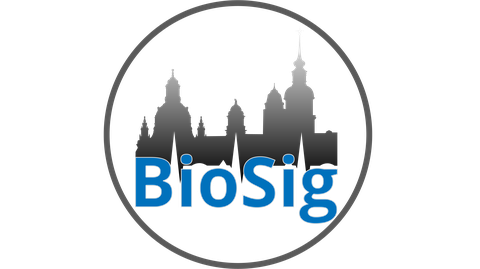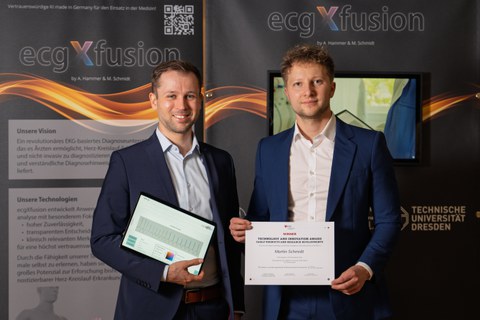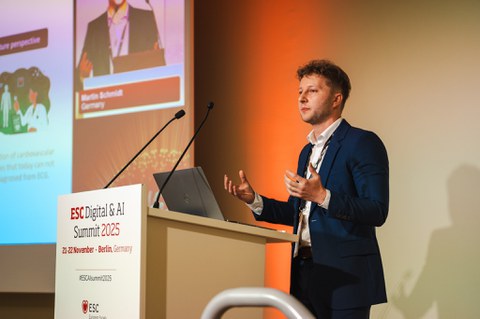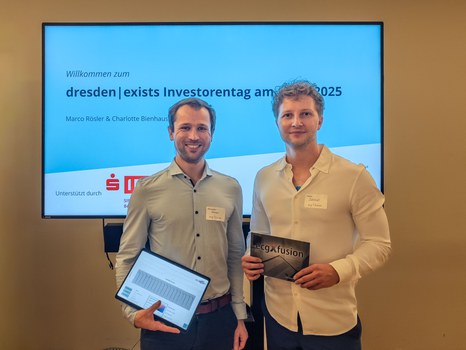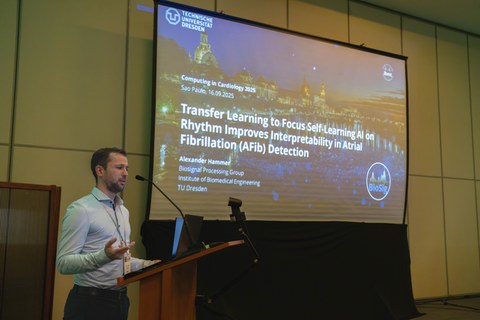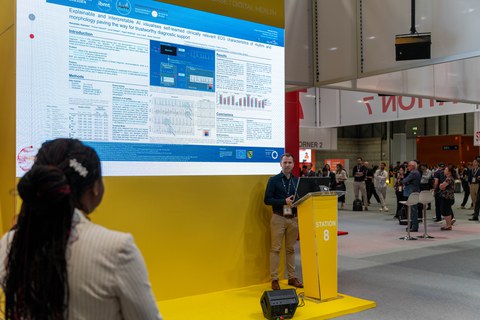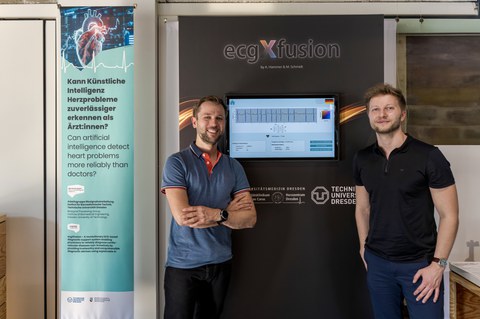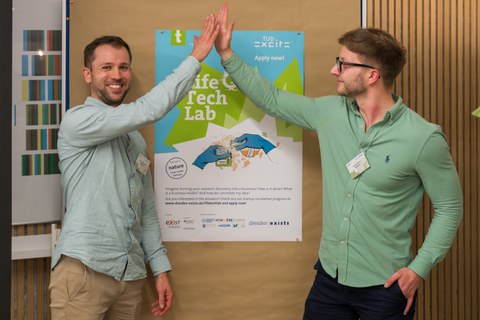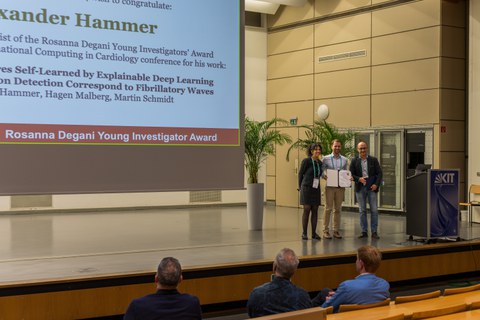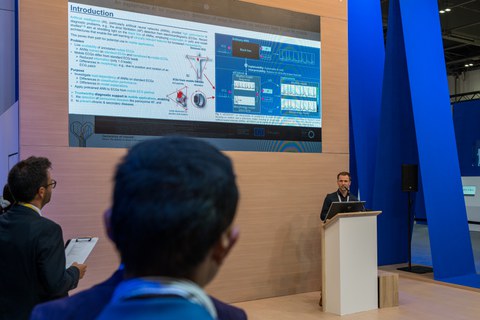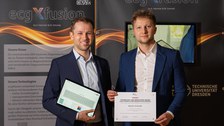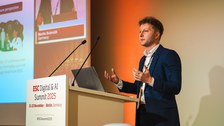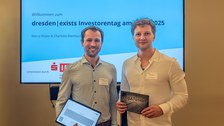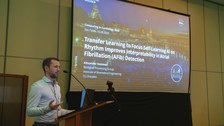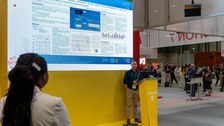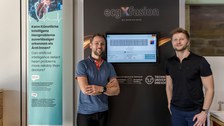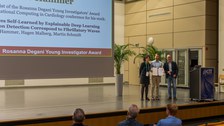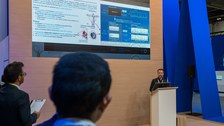ecgXfusion - Innovative ECG analysis based on trustworthy AI
ecgXfusion® – An eXplainable diagnostic support system for reliable ECG analysis. Winner of the Technology and Innovation Award: Early products and research developments of the European Society of Cardiology (ESC Digital & AI Summit 2025, Berlin). © A. Hammer and M. Schmidt
Our Vision
ecgXfusion® – A revolutionary ECG-based diagnostic support system, enabling physicians to reliably diagnose cardiovascular diseases non-invasively by providing trustworthy and comprehensible diagnostic advice using explainable AI.
To realize our vision, we participated in the incubation program LifeTechLab, supported by TUD|excite. Our technology is currently being tested in practice with potential users at the Dresden Heart Centre and with doctors in private practice as part of validation funding, and to quantify the key performance identifiers (KPIs).
Our Technologies
Trustworthy AI made in Germany for use in medicine!
ecgXfusion has set itself the goal of creating AI applications for analyzing ECG signals that are both highly reliable and provide fully transparent decision support for physicians and are therefore comprehensible. Our technologies have the potential to be used not only in research, but also in practicing medicine.
Our technologies are defined by the following features:
- Self-learning of clinically relevant features
The xECGArch AI architecture is capable of self-learning morphology and rhythm features without prior knowledge, while being highly accurate. The features are in line with clinical textbook knowledge. - Intuitive and comprehensible visualisation
Diagnostically relevant features are highlighted in the ECG using intuitive color coding to make diagnostic advice comprehensible. - Offline implementation for personalised applications and real-time solutions
Local implementation of AI models and individualization methods enable applications in clinical and outpatient care, precision medicine and mobile applications.
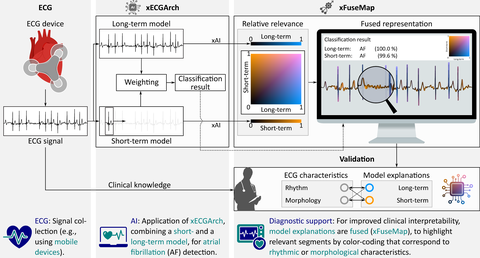
Approach for automatically learning and visualizing clinically relevant long-term (rhythmic) and short-term (morphological) characteristics for the detection of atrial fibrillation (AF) in the electrocardiogram (ECG). It combines the explainable ECG architecture (xECGArch), and the two models it contains (the long-term and the short-term model) with the fused representation of the respective model explanations in a combined saliency map (xFuseMap). The model explanations were validated for agreement with ECG characteristics from clinical knowledge. AI, artificial intelligence; xAI, explainable artificial intelligence. Reference: A. Hammer et al., “Fusion of automatically learned rhythm and morphology features matches diagnostic criteria and enhances AI explainability,” npj Artif. Intell. 1, 19 (2025). https://doi.org/10.1038/s44387-025-00022-w.
The novel AI-based model architecture xECGArch® comprises two separate Convolutional Neural Networks (CNN), which are distinguished by a differential dimensioning of the receptive fields and, consequently, a differential observation horizon. This enables the models to learn different features in the electrocardiogram (ECG) and utilize them for classification. The short-term CNN learns beat morphological features, while the long-term CNN learns rhythm. The features correspond to the characteristics typically used in ECG analysis, which enables medical professionals to interpret the features.
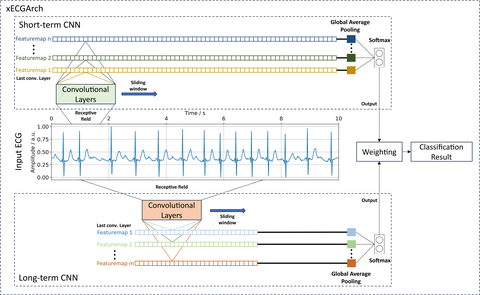
The design of xECGArch® comprises two convolutional neural networks (CNNs) with distinct viewing horizons and the capacity to learn different features (rhythm and morphology) due to the dimensioning of the receptive fields, see https://xecgarch.com.
Publications:
-
M. Goettling, A. Hammer, H. Malberg, and M. Schmidt, “xECGArch: a trustworthy deep learning architecture for interpretable ECG analysis considering short-term and long-term features,” Sci Rep, vol. 14, no. 1, p. 13122, Jun. 2024, doi: 10.1038/s41598-024-63656-x.
-
A. Hammer, M. Goettling, H. Malberg, A. Linke, and M. Schmidt, “An explainable AI for trustworthy detection of atrial fibrillation on reduced lead ECGs in mobile applications,” European Heart Journal, vol. 45, no. Supplement_2, October 2024, doi: 10.1093/eurheartj/ehae666.3497.
-
A. Hammer, H. Malberg, and M. Schmidt, “Morphology Features Self-Learned by Explainable Deep Learning for Atrial Fibrillation Detection Correspond to Fibrillatory Waves,” in 2024 Computing in Cardiology (CinC), pp. 1–4., doi: 10.22489/CinC.2024.305.
xFuseMap® represents the explanations of two models in a merged saliency map. Saliency maps are a form of representation in which the relevance of data points for the classification decision of a model is displayed by coloring the signal. xFuseMap® enables the interpretable and comprehensible visualization of features of different models and feature domains. Each model is assigned a unique color. Data points that are relevant for both or none of the models are colored in mixed colors, creating a two-dimensional color space with the models on one axis each.
xFuseMap® enables the integrated visualization of the explanations derived from both xECGArch® models (long and short term) and their corresponding feature domains (rhythm and morphology) within an electrocardiogram (ECG). Morphology and rhythm are fundamental ECG characteristics that are utilized by physicians for diagnostic purposes and are therefore amenable to classification. The objective is to equip medical professionals with the most reliable diagnostic support.

Reading of the combined representation of model explanations in a fused saliency map (xFuseMap) using an exemplary electrocardiogram (ECG) with atrial fibrillation.
Publication:
-
A. Hammer, M. Göttling, H. Malberg, A. Linke, S. Richter, N. Mangner and M. Schmidt, “Fusion of automatically learned rhythm and morphology features matches diagnostic criteria and enhances AI explainability,” npj Artif. Intell. 1, 19 (2025). https://doi.org/10.1038/s44387-025-00022-w..
-
A. Hammer, F. Hänsch, L. Seliger, H. Malberg, A. Linke and M. Schmidt, "Explainable and interpretable AI visualises self-learned clinically relevant ECG characteristics of rhythm and morphology paving the way for trustworthy diagnostic support", ESC congress 2025, Madrid, accepted.
The autonomic nervous system (ANS) controls numerous functions of the body and shows specific reactions depending on the individual's condition. The evaluation of the ANS therefore allows far-reaching statements to be made, for example on the risk of suffering life-threatening illnesses, an evaluation of sleep and the recording of stress levels.
The Two-Dimensional Signal Warping (2DSW) technique offers the possibility to record complex morphological changes between heartbeats and to make such statements non-invasively (e.g. by analyzing QT variability). The aim is to significantly improve diagnostic possibilities, in particular prediction and prevention, without causing additional stress for patients.
Further information can be found at 2dsw.com.
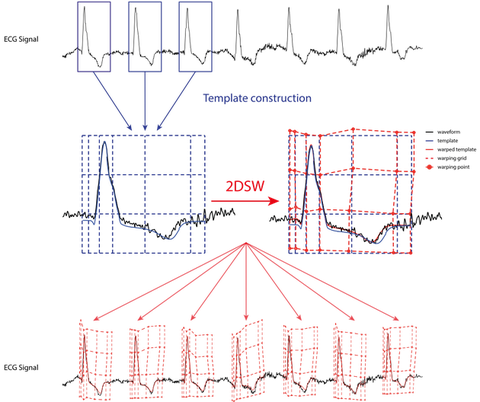
Schema des Two-Dimensional Signal Warping (2DSW, siehe auch http://2dsw.com/).
Publications:
-
M. Schmidt, M. Baumert, A. Porta, H. Malberg, and S. Zaunseder, “Two-Dimensional Warping for One-Dimensional Signals—Conceptual Framework and Application to ECG Processing,” IEEE Transactions on Signal Processing, vol. 62, no. 21, pp. 5577–5588, Nov. 2014, doi: 10.1109/TSP.2014.2354313.
-
M. Schmidt, M. Baumert, H. Malberg, and S. Zaunseder, “Iterative two-dimensional signal warping—Towards a generalized approach for adaption of one-dimensional signals,” Biomedical Signal Processing and Control, vol. 43, pp. 311–319, May 2018, doi: 10.1016/j.bspc.2018.03.016.
-
For further publications, visit 2dsw.com
Clinical Partners
Our IP
Patent DE 10 2023 118 246.3/PCT DE2024 100599 covers the principle of xFuseMap and the AI architecture of xECGArch. Patent application EP 25 175 552.6 covers methods for personalising AI models. The granted patent DE 10 2014 100 609.7 covered the architecture of 2DSW.
ecgXfusion is an initiative of the Biosignal Processing Group of the Institute of Biomedical Engineering and can therefore draw on many years of scientific expertise in the field of acquisition, processing and analysis of biosignals using a wide variety of methods and technologies.
Team

Doctoral Student | ecgXfusion
NameMr Dipl.-Wi.-Ing. Alexander Hammer
Biosignal Processing Group
Send encrypted email via the SecureMail portal (for TUD external users only).
Visiting address:
Fetscherforum (29), 1st Floor, Room 31 Fetscherstraße 29
01307 Dresden

Research Group Leader
NameMr Dr.-Ing. Martin Schmidt
Biosignal Processing Group
Send encrypted email via the SecureMail portal (for TUD external users only).
Visiting address:
Fetscherforum (F29), 1st Floor , Room 34 Fetscherstraße 29
01307 Dresden
Patronage
 © H. Malberg
© H. Malberg
Director of the Institute
NameMr Prof. Dr.-Ing. habil. Hagen Malberg
Send encrypted email via the SecureMail portal (for TUD external users only).
Visitor Address:
Fetscherforum (F29), 1st Floor, Room 11 Fetscherstr. 29
01307 Dresden
None
Medical Director of the Heart Center Dresden
NameMr Prof. Dr. med. habil. Axel Linke



